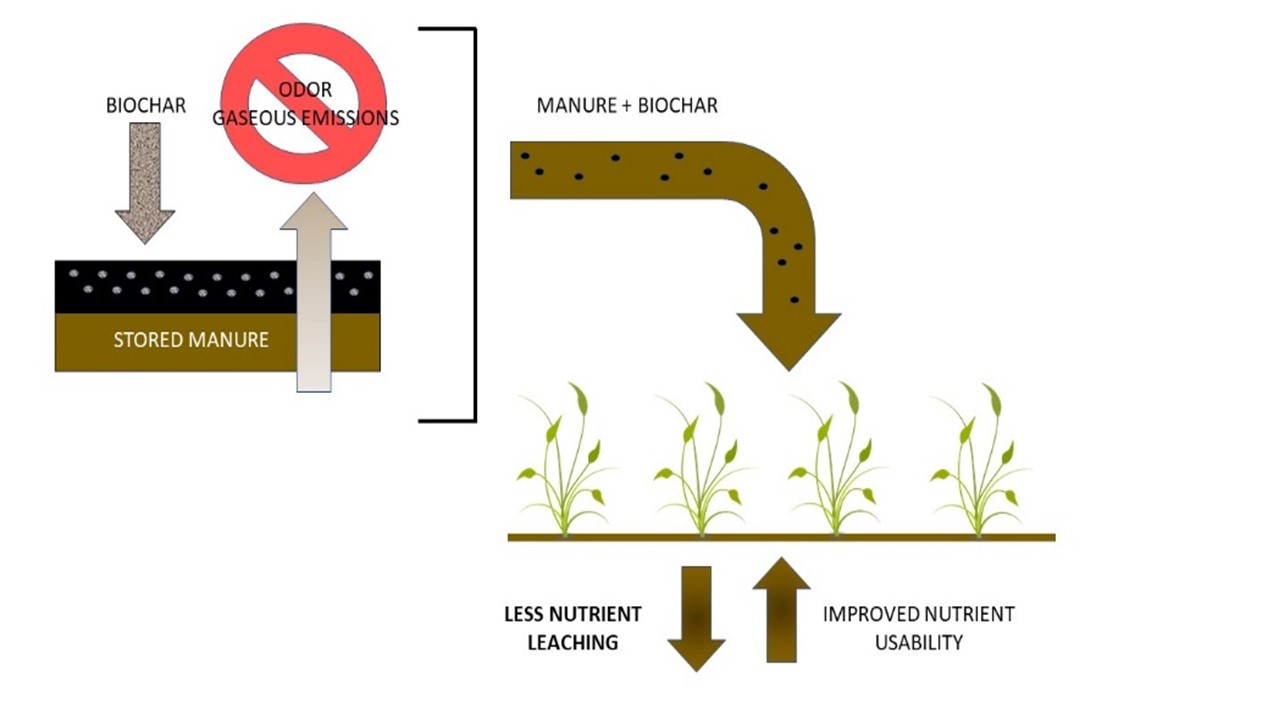The use of swine manure as a source of plant nutrients is one alternative to synthetic fertilizers. However, conventional manure application with >90% water and a low C:N ratio results in soil C loss to the atmosphere. Our hypothesis was to use biochar as a manure nutrient stabilizer that would slowly release nutrients to plants upon biochar-swine manure mixture application to soil. The objectives were to evaluate the impact of biochar-treated swine manure on soil total C, N, and plant-available macro and micronutrients in greenhouse-cultivated corn (Zea mays L.) and soybean (Glycine max (L.) Merr.). Neutral pH red oak (RO), highly alkaline autothermal corn stover (HAP), and mild acidic Fe-treated autothermal corn stover (HAPE) biomass were pyrolyzed to prepare biochars. Each biochar was surface-applied to swine manure at a 1:4 (biochar wt/manure wt) ratio to generate mixtures of manure and respective biochars (MRO, MHAP, and MHAPE). Conventional manure (M) control and manure-biochar mixtures were then applied to the soil at a recommended rate. Corn and soybean were grown under these controls and treatments (S, M, MRO, MHAP, and MHAPE) to evaluate the manure-biochar impact on soil quality, plant biomass yield, and nutrient uptake. Soil OM significantly (<0.05) increased in all manure-biochar treatments; however, no change in soil pH or N was observed under any treatment. No difference in soil ammonium between treatments was identified. There was a significant decrease in soil M3-P and soil NO3- for all manure-biochar treatments compared to the conventional M. However, the plant biomass nutrient concentrations were not significantly different from control manure. Moreover, an increasing trend of N and decreasing trend of P in the plant under all biochar-manure treatments than the controls were noted. This observation suggests that the presence of biochar is capable of influencing the soil N and P in such a way as not to lose those nutrients at the early growth stages of the plant. In general, no statistical difference in corn or soybean biomass yield and plant nutrient uptake for N, P, and K was observed. Interestingly, manure-biochar application to soil significantly diluted the M3-extractable soil Cu and Zn concentrations. The results attribute that manure-biochar has the potential to be a better soil amendment than conventional manure application to the soil.

